The Ultimate Guide to Nonprofit Marketing Strategy in 2022

When your nonprofit started, it was because you sought to solve a particular problem by bringing awareness to the plight of those who were experiencing it, knowing that you were taking on a task that constantly asked you to do more with less. And while your passion for bringing your community together in support of a disadvantaged group might be enough to keep your fire burning, a nonprofit marketing strategy is vital to creating a sustainable program that prompts action, investment, and change.
With the rise of instantaneous and constant communication, thanks to social media platforms, email, and digital advertising, you have unprecedented access to millions of individuals, corporations, and foundations that came together to donate $484 billion in 2021.
NATIV3’s nonprofit marketing guide will help you harness the power of digital marketing to engage your audience, inspire people to get involved, and, ultimately, incite positive, lasting change in your community.
Why a Nonprofit Organization Marketing Strategy Matters
While nonprofit organizations function in a completely different world than for-profit businesses, marketing strategy is primarily the same across both sectors.
Just like a local restaurant or a global corporation, the overarching goal of nonprofit marketing strategy is reaching a larger audience to convince them to get engaged with your brand, spend money, and feel good doing it.
There are, of course, additional challenges that nonprofit organizations face, though.
While most businesses have a mission statement and brand story, it’s not a pivotal piece of their marketing strategies. Instead, they rely on selling tangible goods or services in exchange for money.
Because nonprofits don’t have an exchangeable product to offer those who donate their time and money, they instead must lean almost exclusively on brand storytelling, a rock-solid mission statement, and emotional impact to garner interest from their target audience.
Let’s break some of those concepts down and explore why a nonprofit’s marketing strategy is critical to its success.
Creating Brand Awareness
If your mission is the source of energy within your nonprofit, branding is the catalyst. It increases the power of your vision by attracting and fostering relationships with your target audience.
By choosing to invest in your nonprofit, a supporter is creating a solid emotional and social tie to the narrative you are presenting as the driving force behind your organization.
To that end, you want to create a brand that your audience is proud to identify with and one that sets you apart from other organizations as being of more excellent “value” to your community and benefactors.
A solid nonprofit marketing strategy helps you elevate and promote your brand across a wide range of marketing channels in an attempt to:
- Reassure existing supporters that your organization continues to support the causes they hold closest to their heart
- Ensure sustainability by constantly working to attract more potential donors, volunteers, and partnerships
- Affirm to board members and stakeholders that you are a responsible steward of the organization’s resources
- Stand out as a worthwhile and effective leader that is actively engaged in “righting a wrong” or solving a problem within the local, national, or global community.
Promoting Fundraising Events
One of the most significant investments for nonprofits is donor events, yet history tells us that they are relatively ineffective at attracting new donors.
Attracting Volunteers
Volunteers are the lifeblood of any nonprofit organization, willing to give their time, energy, and talents to further your mission.
While volunteers don’t necessarily bring monetary resources to the table, they do help reduce the burden by providing hands-on services that would otherwise cost your organization money.
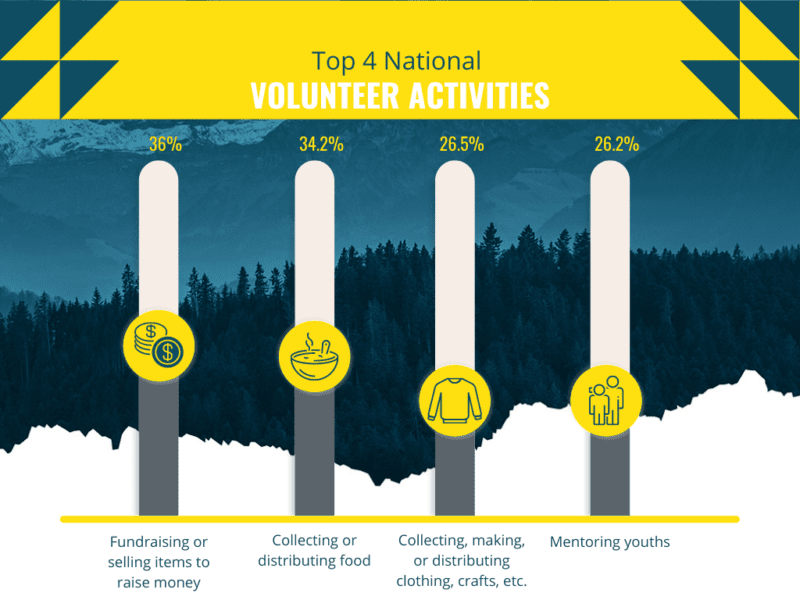
Still not convinced?
In 2019, 77.9 million Americans provided 5.8 billion volunteer hours, valued at $147 billion.
That means that nonprofit organizations had $147 billion more to invest in their community, rather than that money going towards contractor bids, payroll, and commercially produced goods.
If volunteer outreach and retention aren’t a significant consideration in your nonprofit marketing plan, you are missing out on one of the most valuable resources available to cause-based organizations.
They want to serve the community, but they need you to tell them that you’re ready and willing to allow them to do so.
Retaining and Engaging Donors
People can’t donate to causes that they’re not aware of, and your nonprofit marketing strategy helps you address that issue by setting out a clear set of goals for your fundraising efforts.
By implementing a consistent digital marketing strategy, you are setting into motion a system that creates both short-term and long-term results.
You’ll immediately see an increase in your present outreach and donations while gaining invaluable, quantifiable data that helps you fine-tune your future marketing messaging and reach “big picture” fundraising goals.
Step 1: Reaffirm Your Organization’s Mission Statement
Every piece of content you publish, social media post you share, and email you send out should reassure your supporters that your organization’s mission remains at the heart of what you do.
After all, your mission is what drew supporters to you in the first place, so any perceived deviation from it can kindle a sense of distrust and anxiety about whether they should continue investing their charitable dollars into your nonprofit.
Your mission statement should act as a guiding light for every social media post, piece of content marketing, and direct mail message that you send because it is the purpose behind why you do what you do.
Before you jump into marketing ideas, spend some time with your leadership team, executive director, and governing board members to reaffirm that your mission reflects the message you want to send.
If it doesn’t, retool it until you’ve found the correct language to express precisely why your supporters should invest in your cause.
Nonprofit Organizations Mission Statement Checklist
- Does it include the purpose of your nonprofit?
- Does it include the group that will benefit?
- Does it include the intended result of your work?
- Does it include how you intend to invoke change?
- Do you use strong, active verbs and dynamic language?
- Will it resonate with stakeholders and supporters?
- Is it specific enough to keep your nonprofit focused?
- Do you believe in your mission?
Example: The mission of The Family Table is to offer nutritious produce to disadvantaged families across the state in a nonjudgmental, humanizing environment by funding, stocking, and running a twice-weekly farmer’s market stall.
Step 2: Identify Your Marketing Goals
It’s tempting to jump in with both feet when you start marketing your nonprofit, but an unorganized start can be hard to come back from.
Instead, sit down with your team and set some goals. They help ensure that you have benchmarks to work towards, keep everyone focused on the same horizon, and can help inform decisions about where budget dollars should go.
Goals have to have structure and provide direction, a problem that the SMART goal format solves by pushing you to think about vague or general aspirations in a more pragmatic way.
So, for example, let’s say that your goal is to increase Facebook page-based donations.
Instead of leaving it as-is, you should think about the nuances of making it happen. Not only does this create a greater sense of purpose, but it’s also invaluable when the time comes to analyze your performance.
We’ll walk through an example of turning “increase Facebook page-based donations” into a SMART goal:
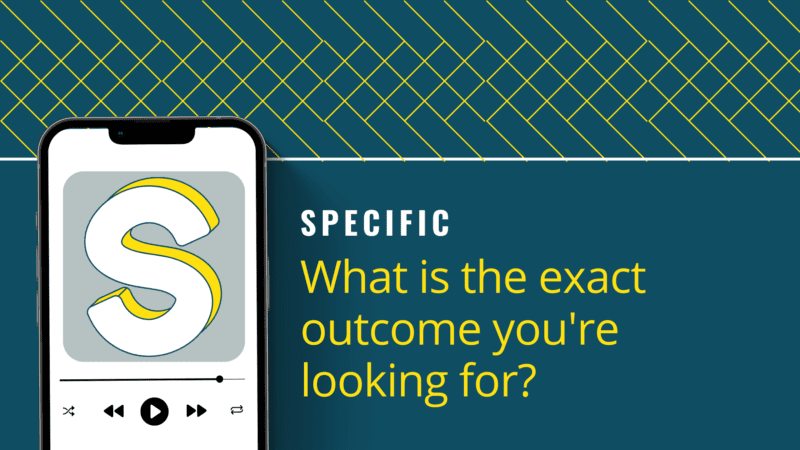
- What are you trying to accomplish?
- Why do you want to set this goal?
- Who is a part of the team, and what are their roles?
- What overarching problem will this goal address?
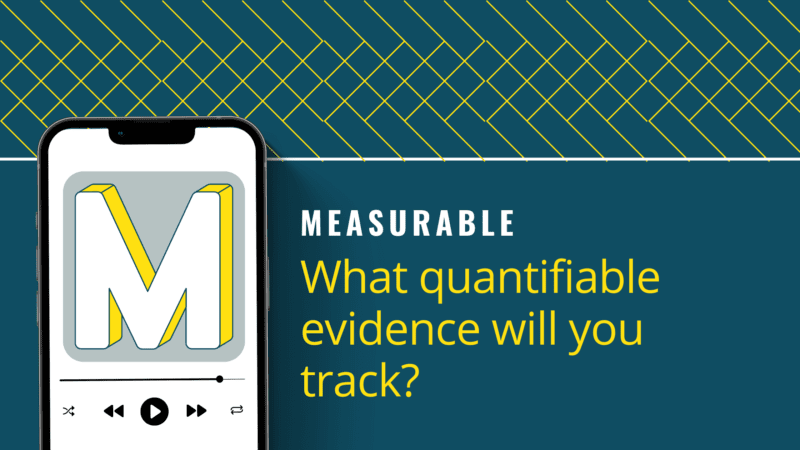
- What target are you trying to reach?
- Are there benchmarks or “mini goals” along the way?
- How will you access this data?
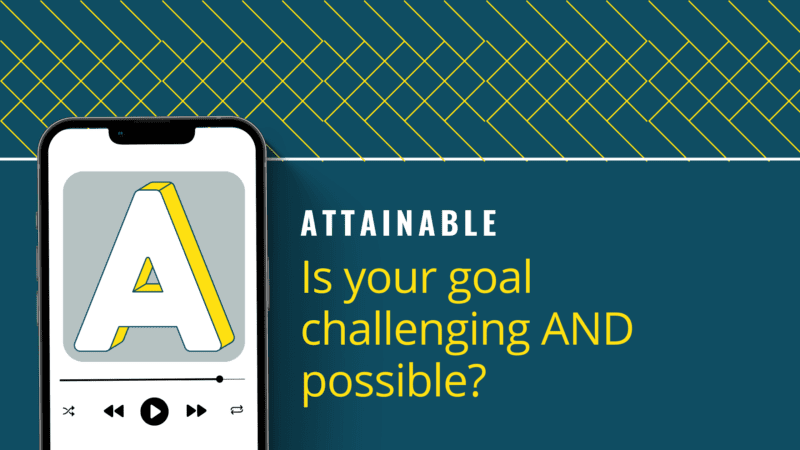
- What target are you trying to reach?
- Are there benchmarks or “mini goals” along the way?
- How will you access this data?

- Why is this goal worth your time and efforts?
- Does this match up with your other goals, both long-term and short-term?
- Is this the right time to work on this goal, or are there other tasks that should take priority?
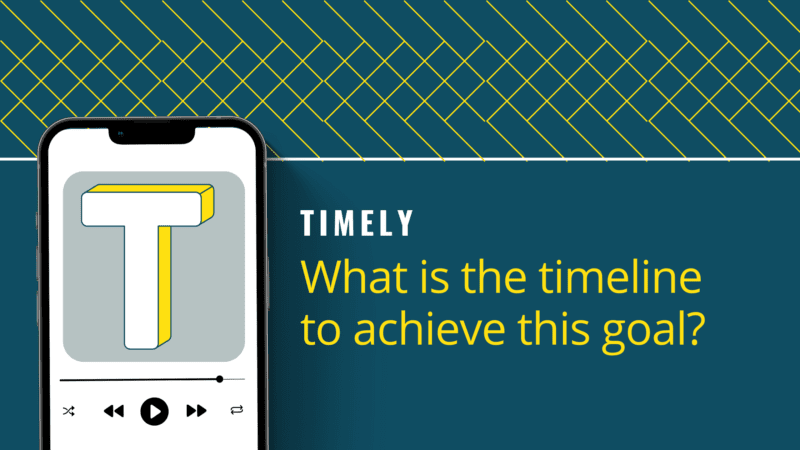
- Why is this goal worth your time and efforts?
- Does this match up with your other goals, both long-term and short-term?
- Is this the right time to work on this goal, or are there other tasks that should take priority?
New SMART Goal: “Our team will improve the Facebook donation process by promoting video content that shows how to use the online fundraising tool and shares how our fundraising efforts will help local food banks. Our purpose is to increase stock before the holiday season begins.
We plan to increase our monthly monetary donations by 20% before September 30, 2022, with a further 10% increase before October 31, 2022.”
Step 3: Map Out a Timeline and Assign Roles
Organization and proactive planning are essential to making a nonprofit marketing strategy work.
Without a timeline to keep things on track, you run the risk of marketing campaigns running late, tasks being put on the backburner, and less data fidelity.
We recommend rolling out some kind of shared calendar or task-planning tool to keep all everyone on the same page.
The NATIV3 team uses Basecamp, which allows users to create project folders, add reoccurring and one-time tasks to a collaborative calendar, and much more. It helps all of our people quickly access resources and hit deadlines with little-to-no opportunities for miscommunication.
Big Picture Timeline
Because you’ve already written your SMART goals, your big picture timeline should wrap up very quickly.
A few items of note to include:
- All SMART goal benchmark due dates
- Pre-existing budget/performance report due dates, as your marketing plan will inevitably become a part of those
- An overarching, year-end number for dollars donated, new supporters, volunteers recruited, etc.
Daily, Weekly, and Monthly Goals
We cannot stress enough the importance of establishing clear, well-communicated standards regarding how often you plan to use particular marketing strategies.
In the chaos of running a nonprofit, it is so easy to accidentally forget to post on social media platforms for weeks at a time or continually push back a particular blog post because other tasks take priority.
It’s also helpful for scaling your nonprofit marketing plan as your team grows. As new marketing team members are added, you can base their roles and responsibilities around what’s already being done.
While every organization has varying levels of time and money to dedicate to their digital marketing strategies, we’d recommend starting with the basics:
- Daily social media posts on platforms that your audience is most likely to use
- A weekly, search-engine-optimized piece of blog content (which we’ll explore more in just a moment)
- A monthly newsletter or organization updates communication
Again, those are just the basics. As you explore different marketing ideas, there’s a good chance that you’ll want to make them a regular part of your routine as your team becomes more adept at targeting supporters.
The possibilities for those additional outreach methods are virtually limitless:
- Monthly paid ad campaigns on social media
- Semiannual direct mail contact
- A one-time, multi-month fundraising email campaign
- Regular Facebook Live Q+A sessions
- Quarterly stakeholder reports
- Annual impact reports
- Monthly thank you messages for reoccurring donor base
- Weekly YouTube content
Step 3: Learn Everything About Your Audience
Next, you’ll want to think about what groups of people are most likely to care about your mission, take an interest in volunteer opportunities, and donate to your cause.
These audience segments can vary widely, even within the same organization.
For example, let’s say that you run an animal shelter with the following goals:
- Attract high school-aged volunteers who need community service hours to meet their graduation requirements.
- Seek pet supply donations from local businesses and monetary contributions from individuals.
- Use social media marketing to fuel adoptions and find temporary placement homes.
Each of those goals requires the attention of one or more distinctly different groups of people, and you’ll need to tailor your marketing strategy according to each demographic’s online habits, goals, financial situations, and preferred form of messaging.
Using that same example, let’s dive into some questions that can help you define and target your audience:
What Demographics Are You Marketing To?
No matter how you segment the population, the overarching majority of people in the United States are deeply invested in supporting charities.
Altruism transcends income level, age, race, personal beliefs, and occupation, a fact that is consistently supported by data from the Charitable Aids Foundation’s World Giving Index, where we currently rank as the 19th most charitable nation out of 114 countries surveyed. That being said, the most accessible place to start when creating your demographics list is with generational groups.
Every age range gives generously, including a massive 72% of Baby Boomers (though you’ll need to lean heavily on more traditional marketing, like direct mail).
From there, you can create further segmentations depending on what or who your nonprofit benefits, keeping in mind that your marketing strategy is attempting to raise awareness in those who care about the cause, not necessarily those whom the donations support.
Examples include:
- Ethnic, cultural, and racial groups
- Family relationships, such as parents or grandparents
- Interest-based groups, like animal lovers, education advocates, or those who want to support advancements in a particular top of research.
- LGBTQA+
- Those of a certain faith
- A particular morality or value system
- Similar organizations for partnerships
The list goes on, but in general, age is going to be your main focus, with further breakdowns within that larger group.
As of July 2022, these are the generational online giving trends to keep in mind:
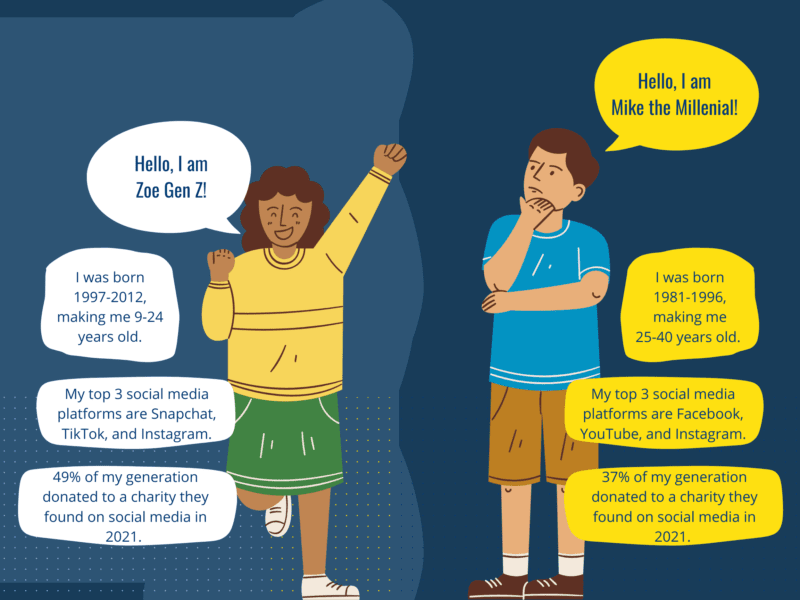
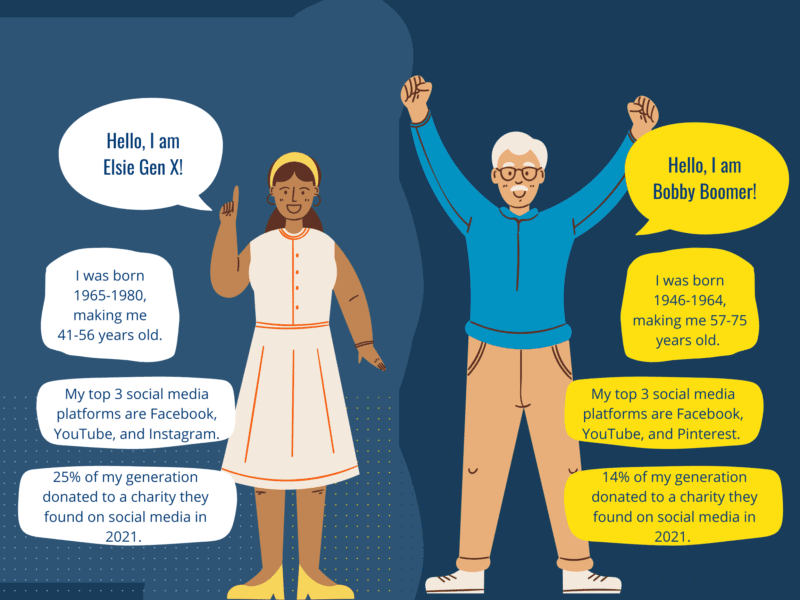
Which Platforms Does Your Audience Use?
Now that you’ve created a list of demographics, it’s time to dive into research about where those audience segments spend their time online.
The easiest way to approach this is by reading through social media use statistics available on sites like Search Engine Journal, Statista, and Pew Research.
Alternatively, you can survey your existing volunteer and donor base to get information, but that’s not necessarily an option for a brand new nonprofit.
Just be sure to review this information often. Over time, you’ll see patterns of change as new platforms or trends emerge.
How Will Your Message Differ for Volunteers, Donors, and Business Partners?
Once you’ve split out your audience into general demographics, you’ll need to cater messages according to whether they’re a volunteer, business partner, or part of your donor base.
The specific communications that you send will differ based on your particular cause and digital marketing method. Still, in general, you’ll want to avoid repeatedly asking your volunteers for donations and vice-versa.
Otherwise, you risk your nonprofit appearing unappreciative of what resources your supporters are willing to share.
Step 4: Keyword Research and Search Engine Optimization
No matter how visually appealing your website is, search engine optimization is an absolute non-negotiable if you want to appear on the first page of search engines.
And given that the first page of Google’s results dominates 88% of all clicks, with the #1 organic search result taking up more than a quarter by itself, it’s something that any sustainable nonprofit marketing budget takes into account.
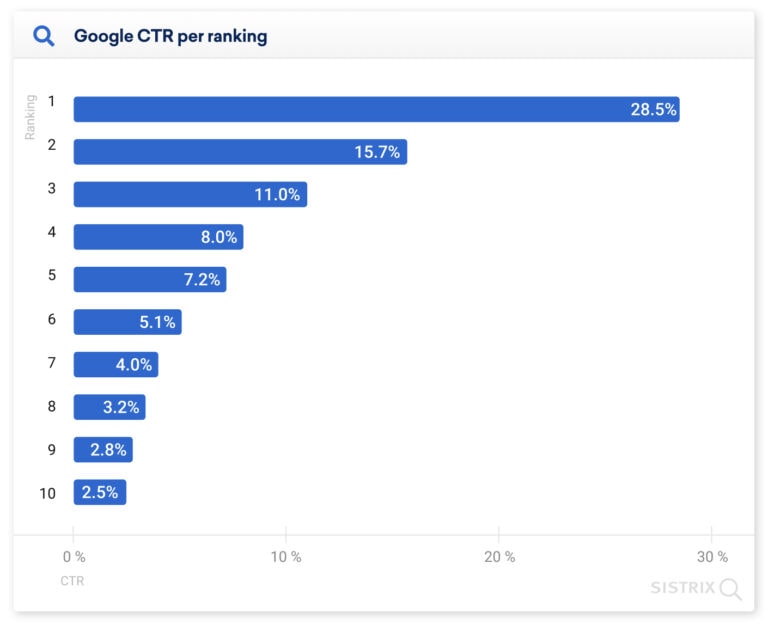
What is SEO?
SEO is a complicated process that requires an, at minimum, middling level of expertise in the basic mechanics of search engines.
That, by no means, implies that you must work with a digital marketing team to optimize your web pages. Just be aware that appearing in search engine results requires ongoing maintenance and keeping abreast of changes in the Google algorithm.
We’re planning on rolling out a more comprehensive SEO guide for nonprofits, but to get you started, here’s our general optimization checklist:
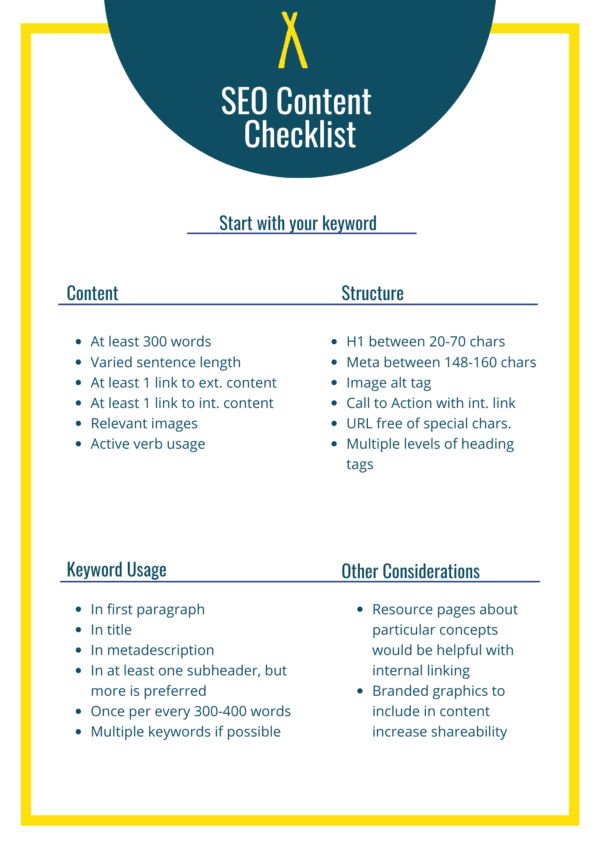
Keyword Research
The first step of SEO will always be keyword research, as it will inform you of the terms that your competitors use to attract users to their websites.
Again, this is something that we’ll dive into more in-depth in our future SEO guide, but a keyword research tool is going to be the simplest point of entry.
Tools like Wordtracker offer a few key terms as part of their free service, but over time, you’ll want to invest in a platform that goes more in-depth like Moz, SEMRush, or a digital marketing agency.
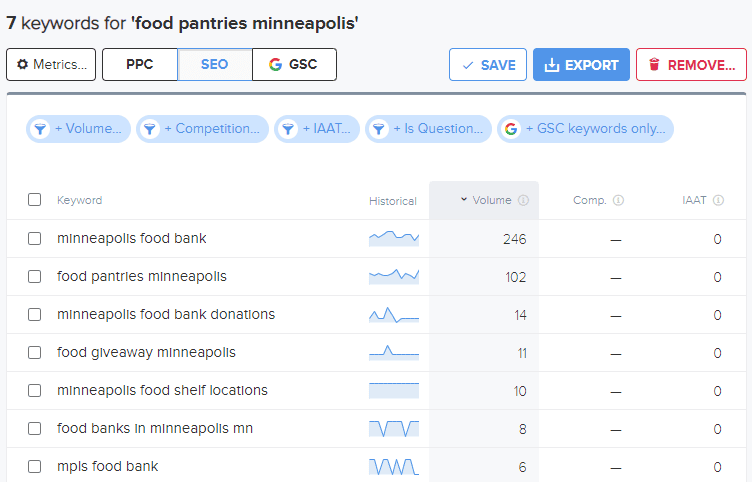
As you can see in the photo above, the term “Minneapolis food bank” gets the most volume, but that also means you’ll be competing against more websites to rank.
The more specific a keyword is, the less likely you are to face a large pool of competitors, but you also have to contend with fewer people using that term in their searches.
Step 5: Create a High-Value Website
If your nonprofit organization hasn’t carved out your digital space in the form of a high-quality, profoundly engaging website, it should be your #1 priority before you even think about pursuing other marketing efforts.
Not only does it act as the home base for your donation page, but it also provides a platform to put your SEO and keyword research to work, which in turn helps you appear in organic search results.
So, what does your nonprofit website need to retain current supporters and attract new ones?
Remove Any Barriers to Donors and Volunteers
Your donation page should be obvious, easy to use, and accessible from your homepage without requiring a complicated avalanche of menus to reach.
Keep things simple and streamlined by limiting the information on the giving page of your site by including a short, compelling message, the donation form, and any necessary legalese to reassure donors that your site meets all security protocols.
Anything beyond that distracts from the action you’re trying to compel.
Use Content to Further Your Message
We’ll look into content marketing strategies down below, but the terms of engagement go beyond your blog posts.
Every word posted online by your nonprofit should work to further your mission, from your homepage to your contact form. Engage your audience with an artful narration and key data that makes an impact while remaining concise.
Lean on Visual Storytelling
There is a bevy of data that supports creating digital marketing strategies heavy on visual content, especially when it comes to reaching a younger audience.
A Hubspot survey found that 54% of consumers want more videos from the brands they support, and we can only expect that number to grow given that all age demographics rank video-heavy platforms like Instagram, Snapchat, and/or YouTube in their top 3 most used social media sites.
Step 6: Map Out Your Marketing Strategy
Trying to jump into all platforms, content types, and marketing methods when you’re just starting your efforts is a recipe for burnout.
You need time to assess your performance to determine what types of content and sites to invest the most time in, so don’t be afraid to start slow. You can always grow your strategy to encompass new platforms as you cull the ones that aren’t worth the effort.
An overview of your marketing strategy can narrow down the number of routes you have available and make it less overwhelming to start this new marketing journey.
What Are We Going to Do?
First, decide on what types of content you’re going to share.
We’d recommend a mix of content and social media to start, then slowly expand out to include other avenues as your brand voice develops.
When Are We Going to Do It?
The question of how often you should post ultimately depends on what you have the resources for. Ideally, you’ll produce new content at least once a week, with social media posts 3-5 times a week.
Again, as you get better at handling the process, you can increase your reach with higher-frequency posts.
What Marketing Tools and Platforms Will We Use?
Not every platform is worth the work for every nonprofit, so be intentional about which ones you spend time on.
For example, creating a LinkedIn marketing plan when you rant to recruit teenage volunteers is going to be a fruitless effort, just as rolling out a custom Snapchat filter to reach high-income business executives would be.
Focus on the platforms where your demographics are most likely to spend their time.
Step 7: Build Platform-Specific Marketing Activities
Now, we’ll get into the nitty-gritty of marketing strategies: putting various platforms to use as tools for attracting charitable giving, convincing potential donors to become new donors, and sharing your nonprofit’s mission where your targeted audiences are most likely to see it.
Nonprofit Content Marketing
Many nonprofits consider any produced media– email, social media post, etc. — as content marketing. Still, for the sake of clarity, we’re referring specifically to your blog post-type publications on your website.
Researching, writing, editing, optimizing, and publishing digital content is a time-consuming process, but it should form the foundation of any nonprofit marketing strategy.
Think of it as the pillars that hold up the rest of your efforts, creating a credible and engaging launch point for turning site visitors into new supporters.
How to Use Content Marketing Effectively
- Use keyword research and SEO to create valuable, high-quality blog posts that appear more often in Google search results.
- Produce a steady stream of content that helps donors, volunteers, and board members more invested in your organization.
- Make an emotional impact with compelling storytelling that involves multiple content formats, including images, video, and text.
- Repurpose your images, videos, and text on your social media accounts. Not only does this save time, but it also helps you reach those who aren’t spending time on your website.
Nonprofit Email Marketing
Nonprofit organizations want to stay top-of-mind, and one of the most effective ways of reaching that goal is by creating a consistent email marketing strategy.
From drip campaigns to thank you messages, there are countless ways you can leverage your email list as a means to boost awareness, collect donations, and recruit volunteers to your cause.
Many organizations choose to automate this process with the help of email marketing tools like MailChimp and Omnisend, and that’s our recommendation for you, as well. These tools work on a list of “triggers” that send messages according to a particular action that someone took.
For example, if new potential donors sign up for your newsletter, your email platform could automatically send them a “Thanks for signing up!” communication that includes a branded infographic of impactful data that compels them to take action.
How to Use Email Marketing Effectively
- Segment your email marketing lists to specifically target donors, volunteers, and interested parties wherever they are in their journey. Using a one-size-fits-all approach is not nearly as effective as ensuring that each subscriber gets personalized communications that acknowledge their support.
- You’re going to need to test the waters when deciding how often you should ask for donations vs. non-donation emails. The easiest way to do so is to test out the success rate of different frequencies over similar time periods. If there’s a significant improvement in donations for a particular frequency rate, let that data inform your marketing plan.
- Email is an excellent way to get information via short, embedded surveys.
Nonprofit Text Message Marketing
Text message marketing channels are going through a sort of renaissance, with consumer surveys noting that 48% of customers prefer SMS communications and that texts have a 98% open rate, compared to the 20% rate seen in email.
A solid text message marketing infrastructure can also serve as an excellent tool for announcing last-minute calls for volunteers.
How to Use Text Message Marketing Effectively
- Avoid “cold texting” as a means of attracting lapsed donors to reengage with your brand. It can come off as invasive and predatory, as many people are likely to assume that you no longer have access to their personal phone numbers after they’ve stopped supporting your cause.
Nonprofit Social Media Marketing
Whether you want to raise funds, provide links to RSVP for an upcoming event, or simply share a win, social media is an excellent place to start.
While it can take some time for your content marketing efforts to pay off, social media offers a much more instantly gratifying experience, especially if your supporters are willing to share your posts to bring awareness to their followers.
The absolute best way to encourage them to do so is by building a social media presence that resonates with the narrative you’ve created for your organization through eye-catching content, visual storytelling, and plenty of video marketing materials.
How to Use Social Media Marketing Effectively
- Send out community-based resource lists for supporters to share with others. This might include information like government agencies and NPOS in your area, what they offer, and how to reach out to them.
- Social is an excellent place to start video marketing if you’re not ready to establish a branded YouTube page.
- Remember that deleting a post doesn’t necessarily make it disappear. It’s effortless for the casual scroller to screenshot and share controversial statements, so be sure you’re saying exactly what you mean before you hit “Post.”
- Ask event attendees to use your nonprofit brand as a hashtag. It draws attention to your cause and helps cultivate your online presence.
Nonprofit Paid Advertising
Depending on your budget, paid advertising may seem out of reach until you can show stakeholders that your efforts are successful enough to warrant boosting posts.
Look into nonprofit paid advertising opportunities like the Google Ad Grants. They offer free paid ad space worth up to $10k a month.
How to Use Paid Advertising Effectively
- Start small and grow over time. Chucking your entire marketing budget into sponsored ads on Instagram is much less effective than tossing a few dollars across different platforms, then analyzing which provides the most bang for your buck.
- When you’re in a position to put money into paid advertising, direct clicks to the most valuable pages on your site, like the donation page or volunteerism calendar.
Step 8: Monitor and Adjust
Once you’ve created a nonprofit marketing strategy that you’re proud of, the battle has only begun. From here, you’ll need to constantly monitor the ebbs and flows of supporter interest, then use that data to inform your future marketing ideas further.
Does the thought of tracking, analyzing, and recreating your digital marketing strategy overwhelm you? We get it. That’s why we offer a comprehensive suite of services that increase the reach of your cause to the donors who believe in the same mission as your organization.